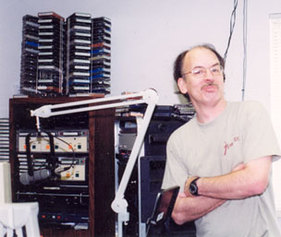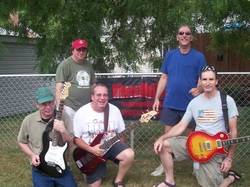
TECHNOLOGY THAT IS NOT PERFECTED
By Bob Burnham
I began my career in broadcasting in an analog world. Most of programming at that came from analog tapes, whether in cartridges or from reel to reel tapes. During my on-air years, those inventions had been around twenty or more years and were quite mature.
Sure, there were issues with them and constant maintenance was necessary to achieve any level of quality and reliability. When we were able to do that, however, the quality and reliability was very high indeed for the standards of that time.
“KIND OF” BETTER
CDs were the first digital medium to come along and suddenly (with a couple of studio CD players) we were supposedly a “digital” station. That wasn’t REALLY true, of course, since the only digital piece of equipment was the player itself which output analog audio into an analog console feeding analog processing to an analog transmitter to analog radios.
But it was “kind of better.” There was no surface noise such as from a vinyl album, or hiss from tape. The recording industry, however, had not YET learned how to make good sounding CDs when they were first invented. Maybe some of us didn’t notice, although purists claimed they could hear the difference and still preferred the sound of vinyl albums to CD.
The broadcast industry did whatever it wanted. The mere convenience of not having to “cue up” a vinyl record or have the cart machine eat the tape seemed to make it worthwhile. As the CD equipment aged, however, we found out that CDs DO skip and sometimes they won’t play at all. That condition worsened when recordable CD equipment became more affordable.
NEW STUDIO PLAYERS A BIG DEAL
But I can assure you at our station, when we got Detroit Radio Legend, Deano Day to do mornings at our station, I got the approval to order bright and shiny new CD players for the main studio. It was kind of a big deal…both Deano and the equipment, that is.
The CD, however, had not been perfected and may never be perfected. Improved upon, yes, but the early claims that a commercially manufactured CD would last “forever” were flawed, and thw CD players themselves have a finite life.
PLAY AUDIO FROM FLOPPY DISC?!
Someone invented various types of digital “cart” players in an attempt to replace the analog carts that had been around since the 1960s.
The most laughable was the version that used computer floppy discs (remember them!?) as the medium. The problem was they could only hold about 2 minutes of audio. Most of us kept using analog carts. I had already developed a knack for re-winding higher grade tape into old cart tapes and replacing any worn parts. Our carts sounded great, and rarely jammed. I felt then, that the broadcast cart format was as good as it was ever going to get.
CONSUMERS HATE MD, BUT RADIO USED THEM ANYWAY
CD recorders were still too expensive. Sony, however, invented the recordable MiniDisc. Although it never caught on with consumers, broadcast stations embraced the format. Sony also manufactured various commercial grade MD players.
Hard drive based systems were still pretty expensive so many stations found they could replace cart machines with MD at a much lower price.
It wasn’t perfection, though. The MD format has inherent problems and limitations, although for the most part, sound wasn’t one of them. Sony got it right in that department, inventing their own proprietary audio compression for MD in 1992. It wasn’t MP3 or any of its predecessors. Sony called it “ATRAC” which stands for Adaptive Transform Acoustic Coding. WHATEVER! It was the key to how they were able to fit 80 minutes of stereo audio into a small optical disc, and still have it sound really good.
NO ESCAPING EVENTUAL FAILURE
Any removable media requiring a mechanical transport, however, will STILL have flaws. In a professional environment, mechanical devices will fail.
Meantime, computer-based hard-drive systems had gradually become more affordable and they became the standard. Stations threw their MD equipment in the dumpster whether it still worked or not.
HARD DRIVE BASED BROADCAST SYSTEMS
The earliest automation systems required a familiarity with Microsoft’s DOS command language. To record a cut, you had to make keyboard entries or hit an F key. Windows based systems and much more studio-friendly touch screens soon replaced the cumbersome early systems during the 1990s. Some of the earliest broadcast automation companies went out of business or were absorbed by the more successful ones,
Like any computer software, automation systems and versions were a constant work in progress. Sometimes version upgrades added many features and fixed problems, but brought along new problems. A stable version meant it could do everything you wanted without crashing or doing something else it wasn’t supposed to.
I wouldn’t say the automation technology is perfected, but it has come a long way in 20 or so years. In terms of reproduction quality, an automation system is capable of SOUNDING better than the tried and true CD format (that was invented in the 1980s).
But like the analog systems of the ancient past, it still needs to be correctly installed AND maintained on an on-going basis.
MECHANICAL PARTS STILL PRONE TO FAILURE
As in any system, the weak link is always the parts of the system that are still mechanical.
In the old days, in an analog cart, if the splice lets go, the tape will spill out into the machine and will appear to “eat” the cart.
In a computer-based system, if there is a hard drive spindle failure, an invading virus or any other kind of hard drive malfunction, the entire system will fail. In the cart machine days, you had only one machine down until the cart tape is replaced and the machine is cleaned. In the computer world, without a level of industrial back-up or redundancy, your station programming is off the air.
HOW PROFESSIONAL SYSTEMS IMPROVE INTEGRITY
In a broadcast world, multiple hard drives in various RAID configurations (Redundant Array of Independent Disks) are used. They spread (or mirror) the data across multiple hard drives. The system will continue to function even if there is an individual drive failure.
RAID technology is used extensively in other fields. There are a lot of other things that CAN go wrong, but this technology has probably reached a reliability level of the venerable cart machine of the analog days.
If one machine (or computer) goes bad in a networked environment, you can generally bring it up on another workstation and be “back” quickly.
The fact is, however, ALL technology is a work in progress. Each advancement whether hardware or software-based will have its positives and negatives. There will always be a way to “break” it or it can “break” itself.
PERSONAL EVOLUTION
My job evolved from the only guy on staff who knew how to load broadcast “carts” (and make them sound almost digital) to that of a multi-purpose digital hardware and audio software guy.
Many factors made my transition a fairly easy one (it was much easier and took a lot fewer years than evolving from a DJ to an Engineer).
DESIGNED & BUILT BY HUMANS BUT WITH CONSTANT NEED FOR ADVANCEMENT
But realize one thing: As advanced as we seem now, what we have is NOT perfected! 10 years from now, today’s hardware will be in the same category as a cart machine is today: Obsolete!
The fact is, however, "cart" machines were built like “tanks” to run forever! If you pulled one out of a dumpster today and plugged it in, it would probably still play. A discarded CD player, however, (with its all-plastic drawer, if it still opened) would probably just sit there and look dumb.
- Bob Burnham
September 24, 2011

